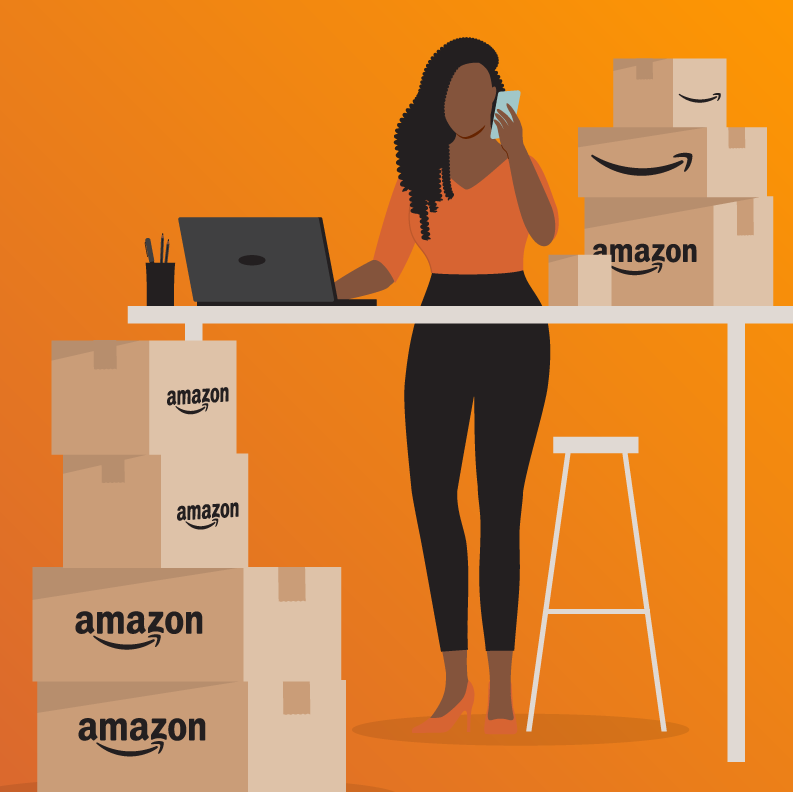
Amazon wants to partner with you no matter how you choose to sell. Need access to Amazon’s vast sea of customers, but want to stay in control of your own listing? Sure thing. Feel comfortable letting Amazon take the reins with your products? That’s ok too.
Amazon offers both first-party (1P) and third-party (3P) seller relationships. What’s the difference? It turns out there are a number of pros and cons to each arrangement.
Amazon 1P vs. 3P Selling
What is Amazon 1P selling?
In a 1P relationship with Amazon, you (the brand) act as a wholesaler who sells directly to Amazon as the retailer. This is a traditional “brand-as-supplier” relationship, with Amazon buying products, selling them and owning all communication with the consumer to complete the sale.
If you want to sell on Amazon as a first-party seller, you must first obtain an invitation from Amazon’s vendor management team. Amazon will send you a purchase order (PO) request, which you fulfill by shipping your products to them.
Need help securing a 1P invitation from Amazon vendor management? Rithum Managed Services can help.
What is Amazon 3P selling?
In a 3P relationship, your brand sells directly to customers via the Amazon marketplace.
You’re responsible for everything from listing products to fulfilling orders to providing customer service.
Third-party relationships are available to nearly every brand without invitation, though certain product categories require Amazon preapproval.
Each option offers different characteristics that may suit your business.
1P Selling |
3P Selling |
| Requires invitation from Amazon vendor management. | No invitation needed. |
| Amazon orders your products in bulk and sets the price. They take care of listing, fulfillment and customer service. | You control your price, listing content, shipping to the customer (unless using a fulfillment provider) and customer interactions. |
| Amazon takes care of optimizing your product pages. | You’re responsible for regularly optimizing your product pages. |
| Your products are automatically eligible for Prime benefits such as two-day shipping. | You can only offer Prime benefits to customers if you use Seller Fulfilled Prime or Fulfillment by Amazon (FBA). |
| You have access to more Amazon advertising options. | You benefit from higher profit margins. |
What About 2P Selling?
In a second-party selling scenario, Amazon is the merchant of record, but not the manufacturer. As the retailer, Amazon buys a brand’s products through a distributor or reseller. The listing still displays Amazon as the seller and shipper.
1P vs 3P: 5 Things You Need to Know
Whether you choose a 1P relationship, 3P relationship or a hybrid of the two, you’ll need to tailor different parts of your Amazon strategy, including:
How You Interact
First-party sellers manage their Amazon relationship via the Vendor Central portal or an e-commerce platform such as Rithum. As a 1P seller, Vendor Central allows you to manage orders, generate sales reports and more.
Third-party sellers manage their relationship with Amazon through Seller Central, a portal exclusively for third parties. Platforms like Rithum provide numerous ways to optimize 3P marketplace sales with automated repricing strategies, retail media, fulfillment services and more.
Managing Your Inventory
1P sellers have little control over the SKUs that Amazon chooses to sell. You’re completely dependent on Amazon POs to send inventory, but you also enjoy little inventory risk.
In 3P relationships, you maintain complete control over what products you list and when you list. You assume more risk in managing your own inventory, but you can also create listings in bulk with inventory files and automate inventory through feeds.
Warehousing and Fulfillment
In the 1P model, Amazon purchases and controls your inventory, meaning they’re completely responsible for warehousing products and shipping orders to customers.
Third-party sellers are responsible for warehousing products and fulfilling customer orders. The one exception to this is when retailers use FBA, outsourcing fulfillment to Amazon for a fee.
Payment Terms
Amazon’s standard payment term for 1P brands is net 90, which may cause a cash-flow problem for smaller companies. For most 3P sellers, funds are transferred from the Amazon Seller Account to a bank account every 14 days.
Marketing Services and Analytics
Amazon offers a range of powerful marketing and analytics services for both 1P and 3P sellers, including:
- Amazon Advertising
- Amazon Vine
- A+ content pages
- Brand Analytics
- Early Reviewer Program
- Vendor Powered Coupons
Rithum Helps You Manage Your Amazon Relationship
Both 1P and 3P selling models offer advantages and disadvantages, making both great options to sell on Amazon. The trick is assessing each and determining which one fits your brand best.
Rithum helps you select the Amazon relationship that makes the most sense for you, and our automated tools and advertising options improve your marketplace efficiency. First-party sellers can streamline their operations by managing drop-ship connections and marketplaces in one platform, while third parties take control of their success with automated tools across the entire buyer journey.
Contact us today to learn how our Managed Services team provides Amazon-specific expertise to better manage and optimize your Amazon presence.
 Back to all
Back to all








